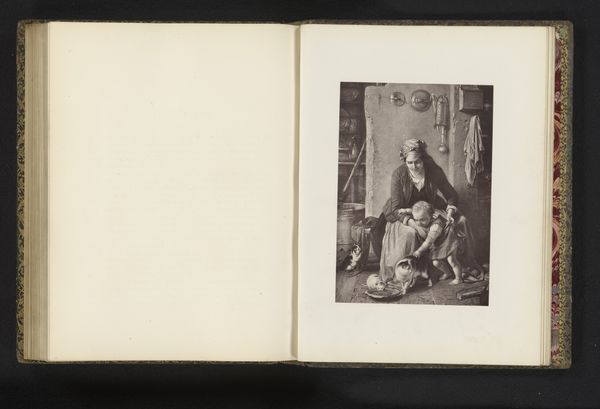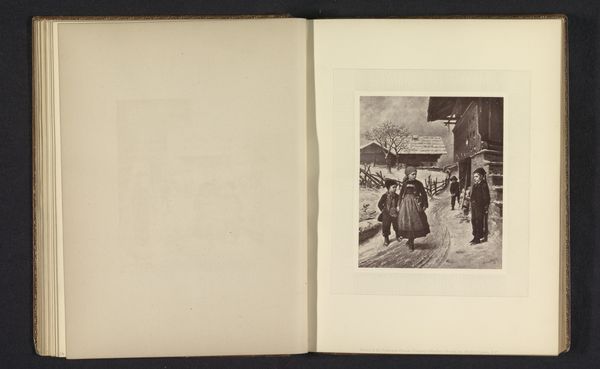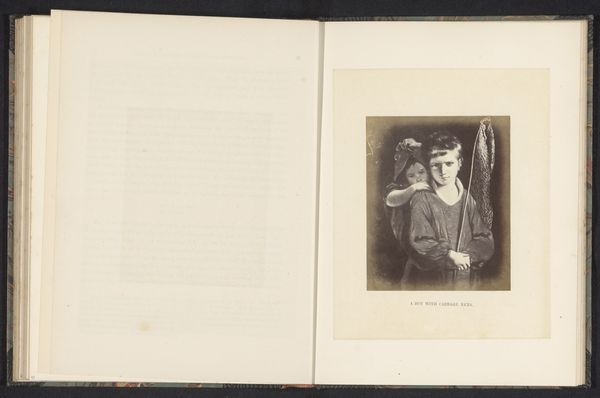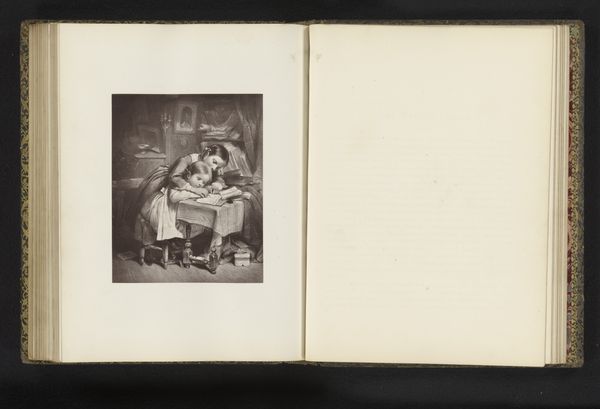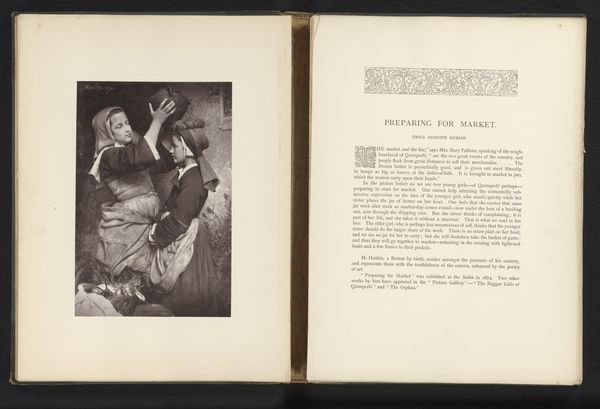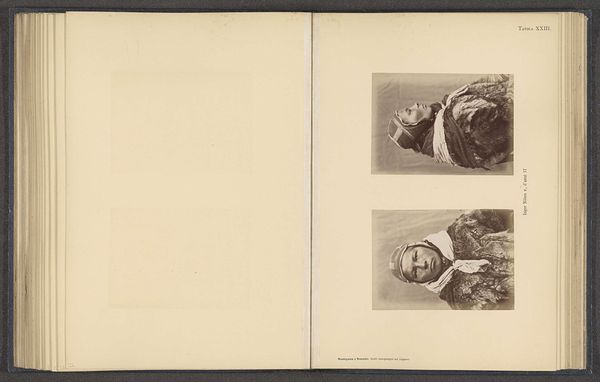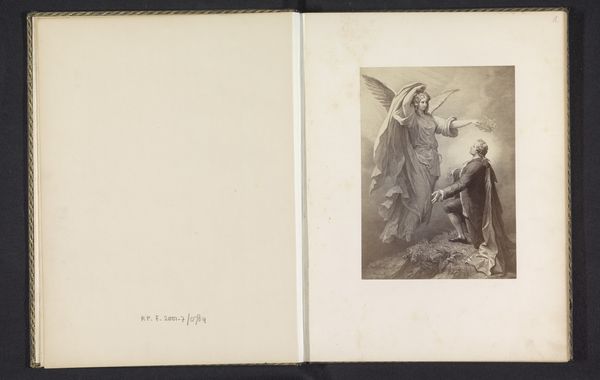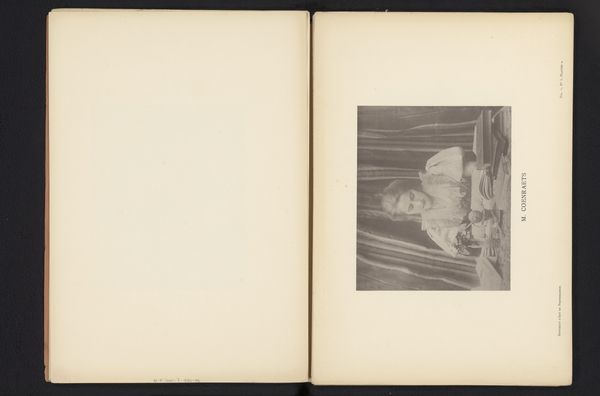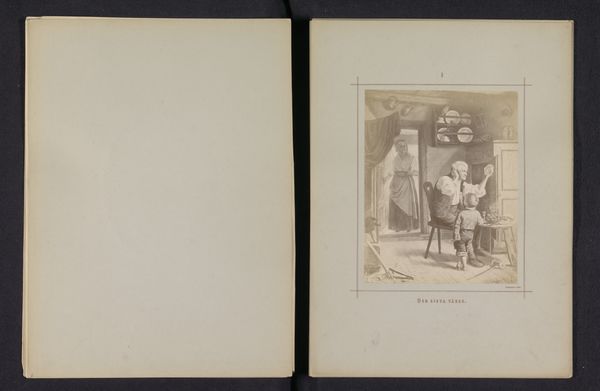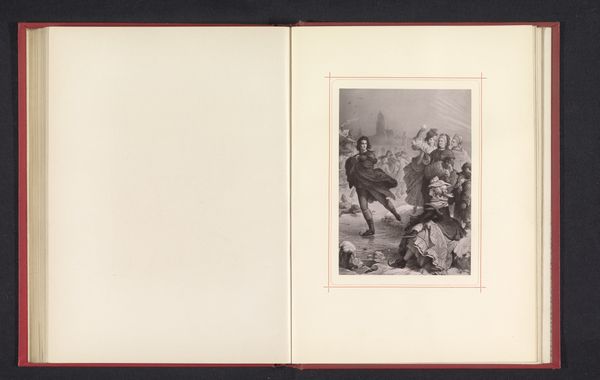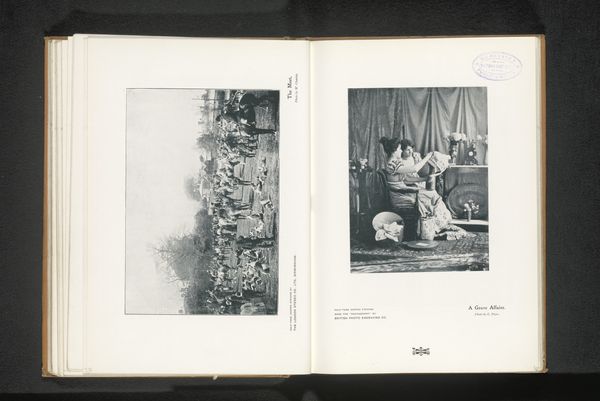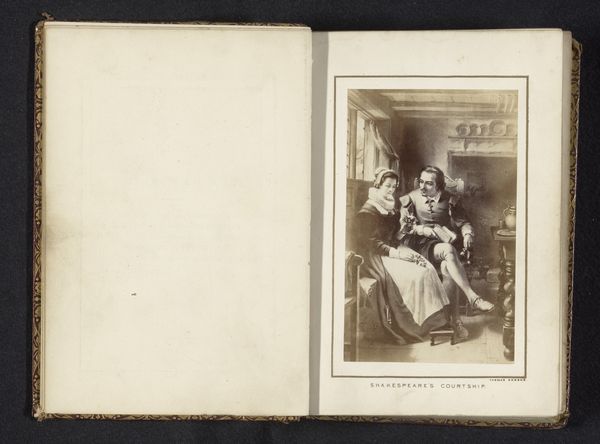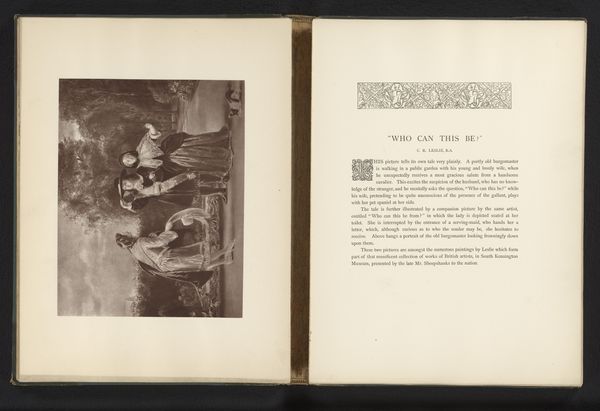
Dimensions: height 175 mm, width 127 mm
Copyright: Rijks Museum: Open Domain
Curator: This drawing, titled "Reproductie van een tekening van een alchemist door John L. Wimbush," dates back to before 1898. It appears to be an ink print on paper, judging by the materials listed. What are your first thoughts? Editor: It immediately strikes me as something out of a stage play, perhaps an illustration from a Gothic novel. There's a real theatrical quality to the light and shadow, a palpable sense of mystery and the unknown. Curator: Well, the image definitely conjures a sense of Romanticism with the classic alchemy setting. What draws my attention are the means used to mass produce images during that era. Reproducing the illustration, printing the plates – the entire system facilitated a particular mode of consuming knowledge and visual art. Editor: Exactly, the print's accessibility speaks to the democratisation of knowledge occurring at the time, despite alchemy often being perceived as esoteric and inaccessible. Publishing houses helped make these images commonplace in society. It catered to popular interest. Curator: The material aspect itself highlights the distribution network needed. Paper, ink, the printing press—it required an industrialized network for production and distribution. Think of the labour, the costs... this seemingly simple print offers so much on that front. Editor: Indeed. And think of how these images functioned. Beyond simple illustration, they fueled debates and discussions about science and philosophy in public and private life. This single illustration existed within a network of books, journals and social circles. The genre-painting aspect helped create these links for a range of public roles that art played. Curator: The level of craftsmanship applied for the genre paintings, like the careful detail reproduced using the chosen print medium. I suspect such qualities speak to a cultural aspiration. Editor: A fascinating thought. To look back now, through a work on paper such as this. I’m left reflecting how art democratises imagery for the public audience through socio-historical reproduction and interpretation. Curator: Agreed. Understanding the methods and context through this reproduction, lets one also better interpret the culture of its moment.
Comments
No comments
Be the first to comment and join the conversation on the ultimate creative platform.
